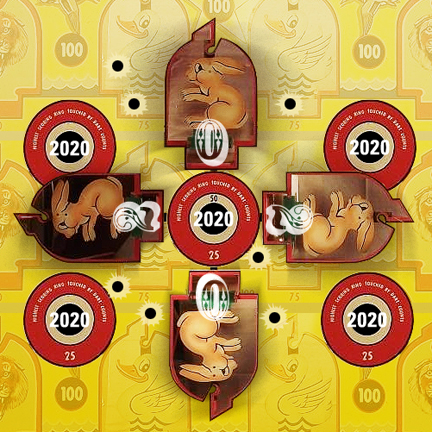 If this very odd year of 2020 has taught us anything, it is
that the unexpected is bound to happen (we just did not think it would happen
in rapid succession!) Whenever something happens that resets all of our
assumptions, especially in business, we have to adjust our plans. In marketing,
that means trying to meet goals in unorthodox ways, but also trying to make
plans for the unexpected.
If this very odd year of 2020 has taught us anything, it is
that the unexpected is bound to happen (we just did not think it would happen
in rapid succession!) Whenever something happens that resets all of our
assumptions, especially in business, we have to adjust our plans. In marketing,
that means trying to meet goals in unorthodox ways, but also trying to make
plans for the unexpected.
I received a call from a client this week. A lot of his
marketing is traditionally done at big tradeshows. They happen in the fall and
the connections he makes will carry his sales throughout the rest of the year.
Of course, 2020 has changed all of those plans. The tradeshow managers are
suggesting a virtual show that they would produce for all of their vendors. The
question: will the customers he usually sees at his booth buy into a virtual
show and give him the same consideration? Likely not. He has a target market
that is on the move and he will have to refocus his marketing to make a
connection like he has at the tradeshows in the past.
How do you adjust to a moving target market? First, talk to
your customers. I cannot emphasize this enough. They will tell you what they
value, what they will give their time to, and what they think is a waste of
time. One of the big changes of 2020 is the push to do everything online. Some
customers love this because they would prefer brand interaction be devoid of
human contact. They prefer being sold on a screen with the product delivered to
their doorstep the next day. Others prefer face-to-face interaction. Where do
your customers fall in that spectrum? Find out and apply it to the second thing you
must do with your marketing: find a marketing format that fits your customers. There
are some marketing formats that are more in line with the customer who prefers
to do everything without talking to anyone. These are rather easy to find. Any
online ad campaign that targets the demographic you are trying to sell and
drives traffic to a landing page is an example. The customer who wants to
interact with people is a bit more challenging, but certainly there is
technology to make this happen. Zoom calls have become the new meeting room.
But you can also drive people to a conversation. For instance, an ad that lands
on a web page with an option for chat would help the person who wants the
interaction. Many of these chat formats use artificial intelligence (AI) to
take care of frequently asked questions or to qualify the customer before
handing them off to a real person. They serve as a clearinghouse for topics or
products and services the customer is asking about.
But what if your customer is averse to meeting online? What
if they are used to doing things with a handshake over a cup of coffee? This
year has put a kink in those plans, hasn’t it? I would suggest you get creative
with your marketing and think beyond what you have been able to do in the past.
For instance, drop off lunch at their place of business and then do a video
conference call. Put your tradeshow on the road. Display it outside in their
parking lot. Rent a tent. Take a grill along with you and cook lunch while you
are in the parking lot. If the customer insists on personal contact,
accommodate them 2020 style.
The best laid marketing plans can get blown up, especially
in a year like 2020. Adjust your marketing to the needs of your customers. You
should be reviewing your marketing plans at least on a quarterly basis. Look
ahead at least six months and prepare for what you think is coming, but build
flexibility into your plans.